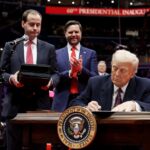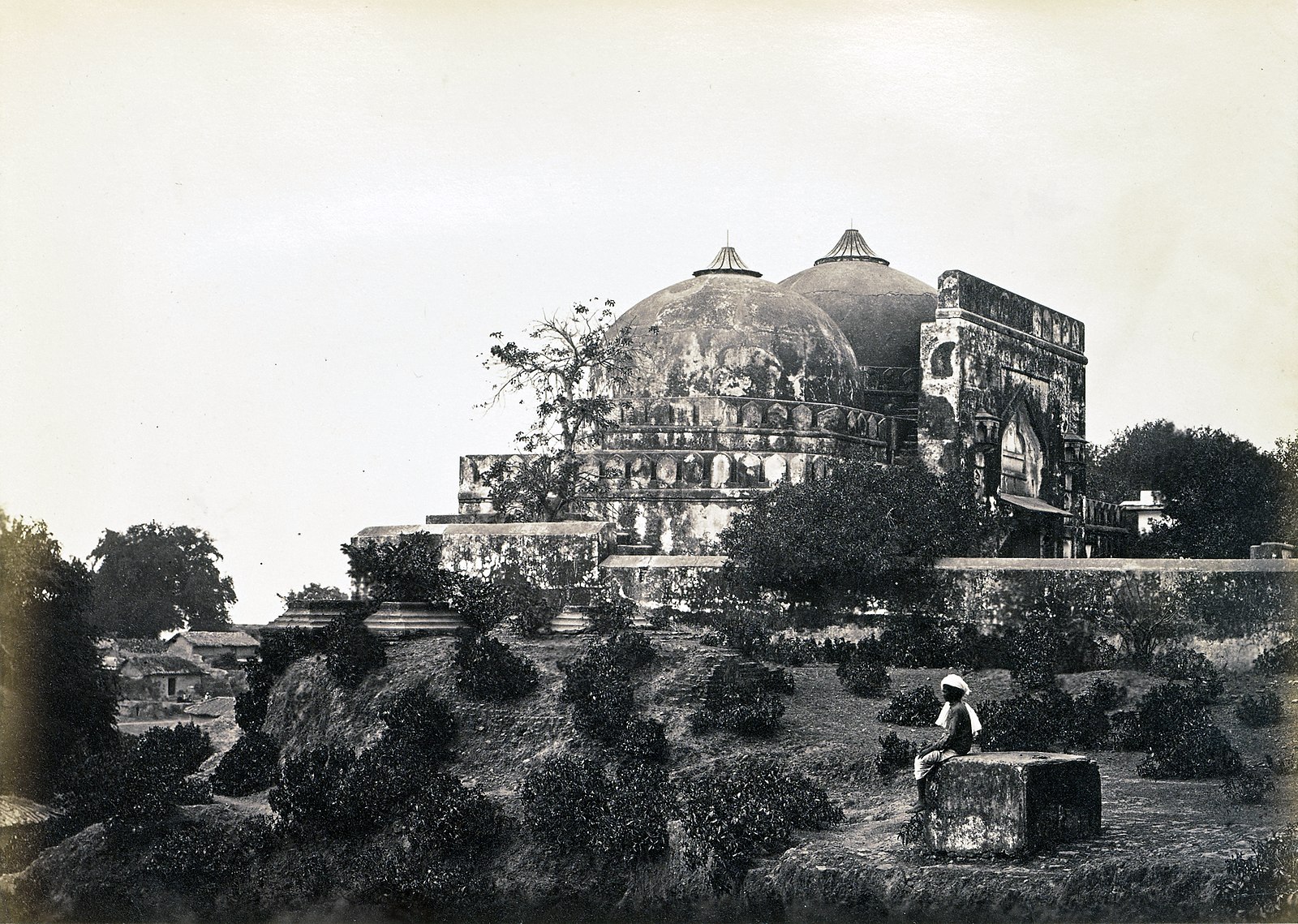PART I: Jugal Bhinde on the paradigm shift of India’s soul
As an Indian educated in the schools of New Delhi, I was often told the tale of our independence from the British Raj. On the night before India was to be made a sovereign republic, the nation’s first Prime Minister, Pandit Jawaharlal Nehru delivered to the nation an address titled: “Tryst with Destiny.” As part of the speech, Nehru remarked, “A moment comes, which comes but rarely in history, when we step out from the old to the new, when an age ends, and when the soul of a nation, long suppressed, finds utterance.”
The question of “India’s soul” has been put forth on too many occasions in the last few years. As a journalist, I have noticed this change since Narendra Modi’s Bharatiya Janata Party (BJP) was elected to power with an outright majority in 2014. Modi and Nehru embody different strands of what the soul of India has looked like, from the moment of its creation in 1947 to the present day.
The question of “India’s soul” has been put forth on too many occasions in the last few years.
In a country where people speak twenty-two different languages and practice six of the world’s major religions, India’s founding fathers thought the nation would have to be built on a secular foundation, where membership would be defined by a person’s place of birth, and not their religion. In a glaring dichotomy, a second state was born whose identity and constitution were set in the molds of theocracy: Pakistan. The partition of the country brought into national discourse the question that if the Muslim population can have a state encompassing the ideals of their religion and culture, why can’t the Hindus have one too? That question was so fervent in the minds of the staunchest of Hindus that a man named Nathuram Godse took it upon himself to gun down Mahatma Gandhi, known to the world as the emancipator of India who freed the nation from colonial rule, but known to Godse and those who shared his ideas as the man responsible for India’s partition and the betrayal of the country’s Hindus.
Gandhi’s assassination was a pivotal moment in the establishment of Hindu nationalism and the ideals of “Hindutva” — a political ideology seeking to establish the hegemony of Hinduism and the Hindu way of life. The Congress Party, which formed India on the ideals of secularism, was successful in keeping Hindutva and its proponents at bay as the country experienced economic growth. But in 1992, a second pivotal moment occurred, one that caused seismic shifts in the fabrics of India’s secular make up.
Members of the BJP, considered weak contenders to the Congress’ rule in New Delhi, organized a national religious rally that would culminate in the city of Ayodhya, believed to be the birthplace of Lord Rama, a supreme Hindu deity. The rallying cry of the participants was to construct a temple for Lord Rama, over the site of the Babri mosque, an Islamic place of worship. The rumor circulating in the country was that the mosque was built by Mughal zealots over a Hindu temple. The rally caused such political fervor that, on December 6, 1992, a mob, incited by high ranking members of the BJP, tore down the Babri mosque, brick by brick.
From this one event, the BJP became a prominent political force, and a worthy adversary to the Congress’s electoral rule. Seven years after the mosque’s demolition, they successfully won elections in 1999 and formed a government which lasted until 2004. Ten years later, Narendra Modi and his BJP defeated the Congress in elections again, only this time with an outright majority, and a clear agenda to systematically sideline the rights of Muslims and other minorities in the country. The most evident and outright constitutional measure the Modi government has taken against Muslims in the country was the Citizenship Amendment Act in 2019, where under a new law, refugees from neighboring countries such as Afghanistan, Bangladesh and Pakistan could obtain Indian citizenship. The law explicitly excludes Muslims from eligibility.
From their beginnings as a fringe group to their current political power in India today, proponents of Hindutva, an ideology which can be mirrored to American white nationalism for its bigotry, exclusion and shared belief in a “master race,” gained prominence as a result of tumultuous events like the assassination of Gandhi and the demolition of the Babri masjid. As an Indian, I feel that there is a similar chapter currently unfolding in the United States.
PART II: Leo Hochberg on the great inversion of American politics
As an American born just before the turn of the century, the story that I have to tell about democracy in my lifetime is different, yet similar in so many ways to that of India and its shift toward ethno-nationalism. My first interaction with democracy did not occur in any political power center. Instead, it took place at the local elementary school in my hometown, just north of Philadelphia, when my mother took me with her to the polls to vote for our next mayor in the town’s 2004 elections. I was only six years old at the time, and even though I was too young to participate in the act of democracy myself that day, I often feel a mournful nostalgia for how mundane it all was. This was long before the Trump presidency, a time when most Americans believed in democratic norms and were willing to accept the outcome of elections even if their preferred party or candidate had lost.
Oh, how much has changed.
Despite its survival in America for over two full centuries, democracy is still an inherently fragile creature. Its natural predator is division; a breakdown of society such that its constituent parts begin to view beating each other and realizing their own agendas as more important than upholding democratic norms such as the peaceful transition of power or rule of law. It is these very institutions and norms which have begun to break down in the past decade, and we can’t only blame Donald Trump. For example, 2010 saw the rise of the Tea Party movement, an ultra-conservative branch of the Republican Party which has been allowed for far too long to corrupt the GOP by unmooring it from its traditional dock of pro-business economics and pushing it toward more treacherous waters of populism and illiberalism.
While the Tea Party has worked to remake American conservatism from within the state, an even wider array of identitarian social movements have labored to transform the American right from the outside. I speak here of America’s many neo-fascist and white supremacist networks which go far beyond traditional conservative rhetoric and promote dangerous claims of ethnic sovereignty and racial superiority. These groups are diverse both in origin and goals — some, such as the remnants of the Klu Klux Klan, propagate distinctly white protestant themes of violence, lost glory and nationhood. Others, such as the more recently born Proud Boys, deliver a message of male chauvinism and unapologetic toxic masculinity. Despite their differences, the intersection of all of these groups has always been white male power and opposition to multiracial democracy.
I count myself lucky that I grew up in America during a time when these groups seemed to exist mostly at the fringes, at least to much of white and middle-class America. But the violent fringe of the American right has always existed, biding its time and waiting for the right political mood to strike. And their prayers were answered in 2016, with the election of Donald J. Trump.
What has followed since is nothing less than a massive collapse of democratic norms. Mr. Trump’s efforts to reshape immigration policy, surround himself with advisors who have been accused of supporting white nationalism and supremacy, and embrace an unbending protectionist global image have all set the stage for a resurgence of the American far right and a total transformation of Trump’s own political party. Far from the traditional conversative standard bearer of the 1990’s and early 2000’s, the GOP has restructured itself to be a guardian and protector of Trumpism. Meanwhile, Mr. Trump’s repeated refusals to condemn extremist organizations such as the Proud Boys were all but an invitation for America’s far right identitarian fringe to step out of the shadows.
Despite Trump’s seemingly endless propensity to shatter norms, his presidency ended in a far more catastrophic collision than most could have foreseen. In the afternoon hours of Jan. 6, a thousands-strong mob of Trump’s most ardent and radical supporters tore through the security surrounding the US Capitol Building and stormed the offices of Congress, forcing the country’s elected legislators to evacuate for fear of their lives. For hours afterwards, the mob roamed the Capitol Building, waving the confederate flag and desecrating the halls of the American government.
I can only describe the siege on the US Capitol Building as America’s Babri Masjid moment — a single day in which extreme political forces…besieged a critical symbol of pluralistic nationhood.
Like most viewers around the world, I watched these events play out on a screen. As the first videos circulated on Twitter showing armed protestors shattering windows of the Capitol Building, I shivered to think how shocked, yet distinctly unsurprised I was. The buildup to the Capitol siege was long and slow, but it was not hidden. It lived and breathed in plain sight, dripping from the mouths of right-wing pundits who foretold and incited uprisings against the federal government. It lay within the speeches of elected officials who espoused disinformation and contrived lies, including the many GOP Congresspeople who upheld Donald Trump’s baseless claims of election fraud. And it permeated among Trump’s own political base, who to this day grow ever-more disillusioned with American democracy, and the pluralism that it entails.
I can only describe the siege on the US Capitol Building as America’s Babri Masjid moment — a single day in which extreme political forces that had long found home in the fringes and shadows, besieged a critical symbol of pluralistic nationhood. If we are ever to repair our aching and ailing democracy, we would do well to heed warnings from countries such as India, which saw the rise of extremist party politics decades before the United States.
PART III: When the Babri Masjid crumbles in Washington
The destruction of the Babri Masjid in India in 1992 and the siege of the US Capitol on Jan. 6 can be considered events which definitively altered the souls of both respective nations. The foundations of a liberal secular democracy upon which both countries are built have been challenged by elements that view their nations from lenses of exclusivity, nationalism, and xenophobia. In diverse societies made up by people from various races, religions and ethnic groups, if one sect tries to impose or claim superiority over others through means of intimidation and violence, that movement has to be immediately halted. However, these movements have now gained recognition in the highest forms of elected office. It wasn’t through one election or one head of state that the fabrics of India or the United States were altered. The seeds of change were sown many years ago, and the harvest today has presented itself in the form of the subjugation of everyone who doesn’t look like, sound like, or even pray like those in power. The phrases “beacon of democracy” and the “largest democracy in the world” are phrases that the United States and India have long identified with, and it is this very identity which is under threat like never before.
Today, the former president of the US now stands impeached for his role in inciting the siege on the Capitol Building; however, the Senate appears unlikely to achieve the two-thirds majority necessary to convict him. To leave unaccountable those responsible for inciting division sets a harmful standard that such acts can proceed without consequences, further damaging the norm of checks and balances which upholds American democracy. When the Indian judiciary acquitted leaders of the BJP accused of inciting a violent mob that destroyed the Babri mosque, it set a dangerous precedent in the country that political leaders could use violence and intimidation to gain power. The US government has a key opportunity to prevent itself from following India in its path toward authoritarianism, but such an autocratic fate may only be avoided if Congress chooses the path of accountability instead and convicts Donald Trump.
Jugal Bhinde (@BhindeJugal) is a masters student at Utrecht University. He has previously worked as a journalist in Kashmir, Jordan and the West Bank.
Leo Hochberg (@L_W_Hochberg) is a masters student at Utrecht University and a graduate fellow with the cyber program at the Middle East Institute.




















